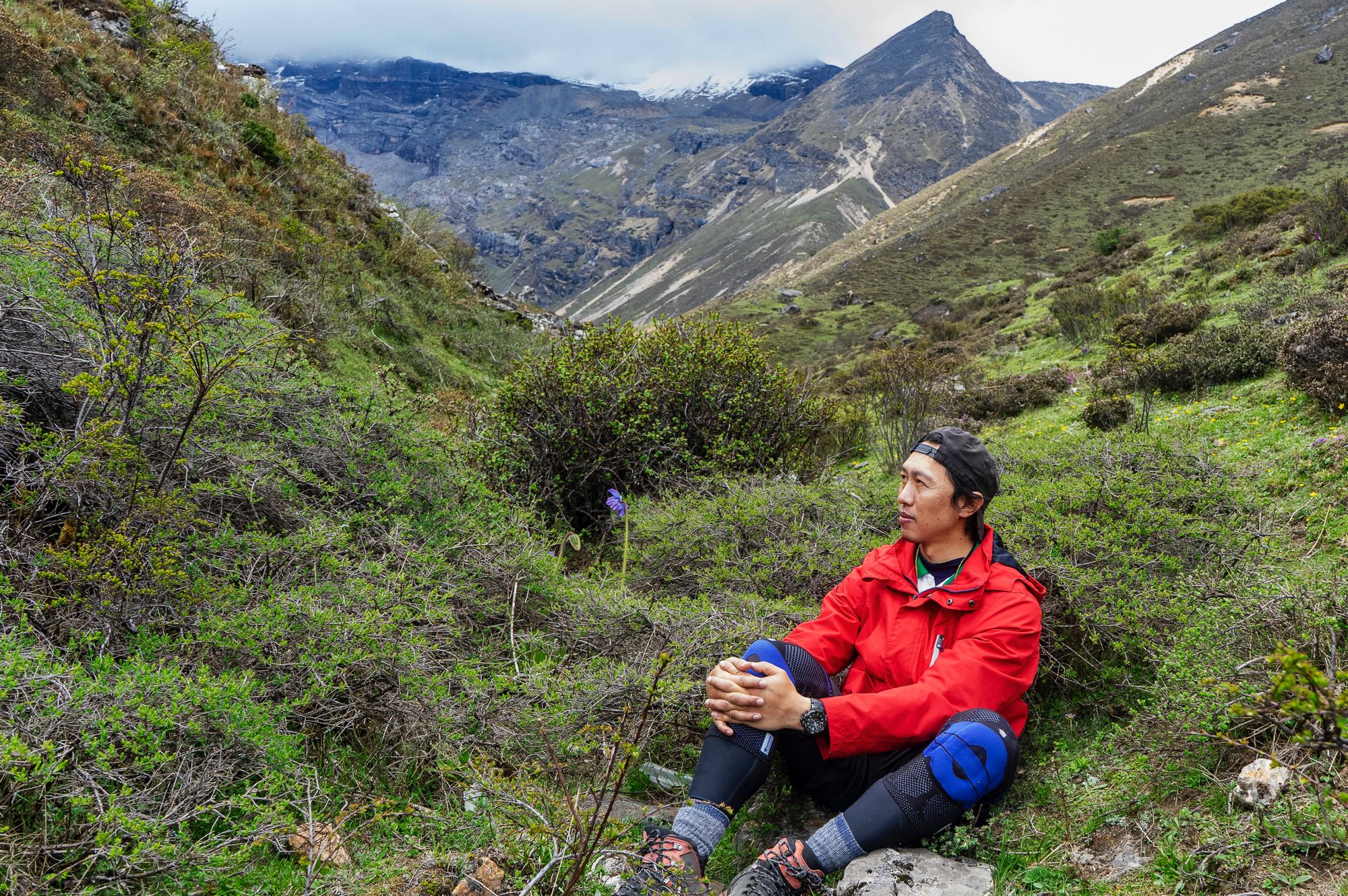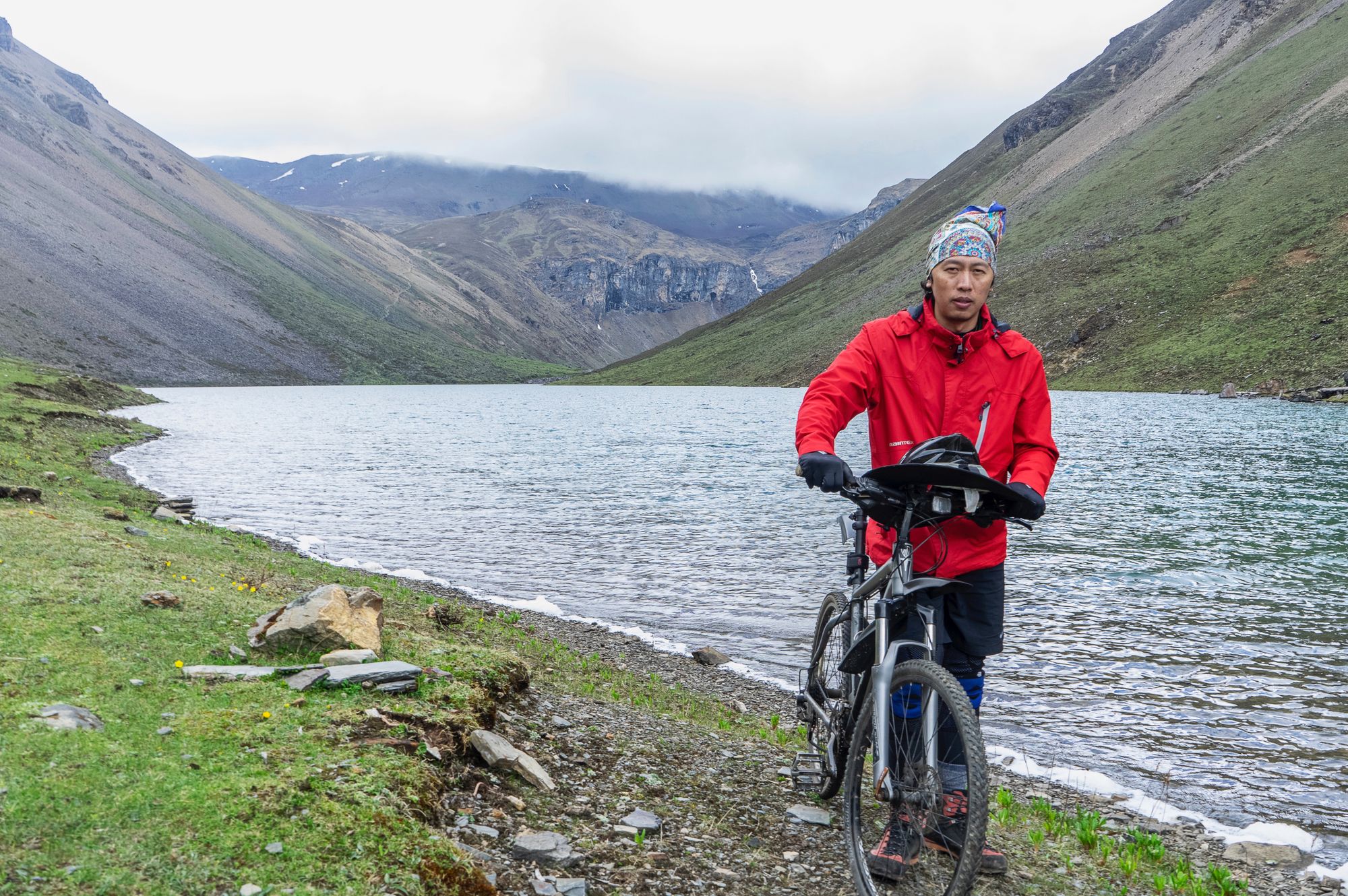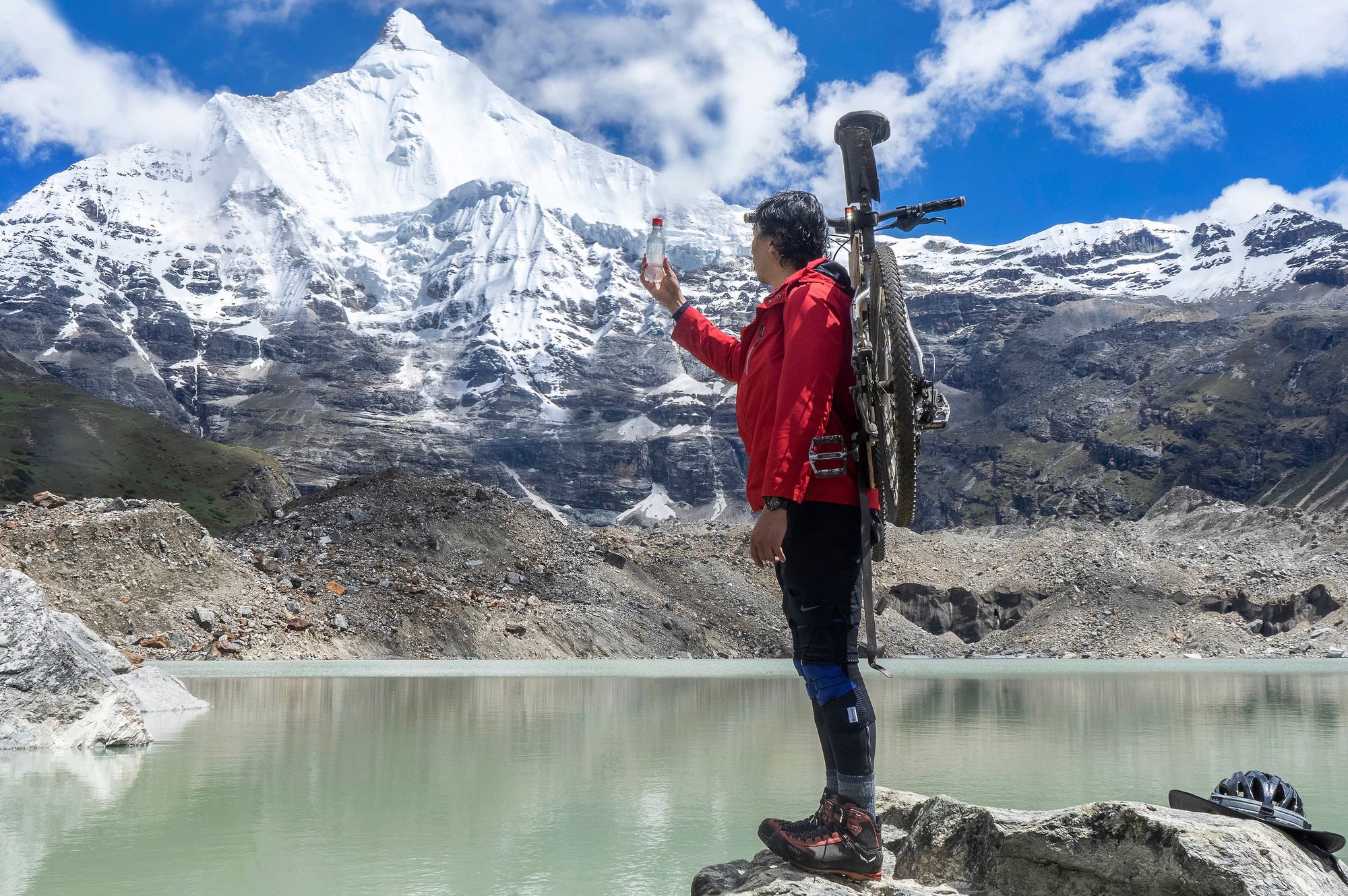Bhutanese Filmmaker Jamyang Wangchuk on his Efforts to Highlight Climate Change

Growing up in a remote district in Bhutan, the only carbon negative country in the world, Jamyang could “pick berries with friends, chew on wild cinnamon sticks and see a tiger, a leopard and a bear in the wild”. It was here, from his early childhood, that he got a sense of connection with nature and the environment, which eventually lead him to working on projects connected to climate change.
Nutsa Sitchinava had a talk with our 2019 alum Jamyang to discuss filmmaking about climate change, as well as his project Climate-On-Wheels, which draws awareness to plastic pollution and global warming.

How did you become a filmmaker?
As much as I loved movies and storytelling, a career in filmmaking in Bhutan wasn’t an option. Working as a tour guide opened my eyes to my beautiful culture and rich oral traditions. This reignited my drive to tell the enchanting stories that lay hidden within the mountains, waiting to be told.
Like myself, the filmmakers in Bhutan are self-taught with no formal training. I produced, wrote, directed and acted in my debut feature film Gyalsey Legacy of a Prince. I wore many hats to learn about the different aspects of filmmaking and more importantly, to know where my strengths and weaknesses lie. I also distributed the film myself by driving around the countryside and schools with a projector, two sound boxes and a white sheet.
Considering Bhutan is the only carbon negative country in the world, how did the problem of climate change become a pressing subject for you?
During school breaks, I’d accompany my father on his village tours, walking through the forests for weeks. He was a civil servant who educated the villagers on sourcing clean drinking water, raising awareness about AIDS and family planning. This opened my eyes to the natural world and helped nurture my love for nature.
In February of 2020 I was selected to take part in a climate leaderhip training in the US by former US Vice President Al Gore and his foundation. However, the event was postponed due to the pandemic and I got stuck in New York, which was then the epicentre of the pandemic. A month later, I was exposed to Covid-19. Fortunately, I was spared the worst, with only minor symptoms. I started thinking, how can I create a positive impact with what I do? Through my recovery, I continued to educate myself on the subject by watching numerous films and taking onlines courses. But news about [99 year old British army veteran] Tom Moore running laps on crutches around his garden, in the twilight of his years to raise money for charity was a huge inspiration for me! It wasn’t long after this that I developed the idea for my current project, Climate-On-Wheels.
Could you tell us more about Climate-On-Wheels?
This year in spring, I will first trek to a mountain and source glacial melt-water into a used plastic bottle. I will then carry the plastic bottle with me as I cycle across Bhutan, stopping in schools and colleges to talk and engage with the students on the climate crisis. This is the basis of Climate-On-Wheels.
The used plastic bottle will be representative of the plastic pollution plaguing the world and the melt-water inside will be symbolic of the rapidly melting glaciers in the Himalayas. A film crew will follow and shoot the whole journey into an educational documentary series “The Messenger” on the environment and the impact of climate change in Bhutan.

What are the biggest challenges while making film about climate change?
The main challenge of making a film on climate change is to convince people on how urgent the situation is since climate change is less visible than other environmental problems. Also it’s impact is mostly distant. A film has to delicately balance all this information to make a compelling case while catering to audiences from all walks of life and, even more importantly, to demand climate action from governments and big business conglomerates who are aware and responsible for climate change impacts yet unwilling to act, to protect their interests.
Now, as I embark on my initiative, I have my own set of challenges that lie ahead. Firstly, there has never been such an initiative on climate change undertaken by an individual in Bhutan. I’m not sure how it will be received but I think it will be a success even if it can inspire just one mind and open one heart.
Secondly, we have very few professionaly trained film crew who could share the load with me. To cycle across the country and simultaneously direct the series myself will be a huge challenge. Moreover, I want it to be a project that is solely supported and funded by Bhutanese so that we can tell our own story and send a message of hope and unity.
From your experience, what are some ways filmmakers can make their productions less taxing on the environment?
I think if filmmakers invest extra time and effort in pre-production, it can save a lot of time, resources and money during production, which can drastically reduce your carbon footprint.
On my productions we’ve done simple things like borrowing cooking utensils, plates and mugs for the duration of the shoot to avoid single use items. We bought shoot supplies in bulk, meaning less packaging and deliveries, reducing our carbon footprint. All the crew travelled together in one big bus, reducing emissions. We shot on location with no built sets, saving cost and waste. We provided boiled and filtered water for drinking to avoid plastic water bottles.
In my debut feature, I included a message in the end credits of the film on waste management. For my new documentary series, I am rallying the government to plant a tree for each citizen. Besides that, I plan to plant trees in all my future productions to help offset the carbon footprint.
How do you predict climate change will affect cinema?
There have been very few mainstream films that really deal with climate change, but I do hope in the near future more films from Hollywood will take the subject matter. I think more films should try to find that sweet spot between jolting audiences and inspiring them and not be a cause for despair but rather an opportunity. Also children’s programmes on environmental issues work very well for everyday practises and overall awareness. Parents often watch with them and they learn together. So there is a need for more movies, more TV and more music so that we can touch people’s hearts with this.
You can see some of Jamyang's work on his YouTube channel